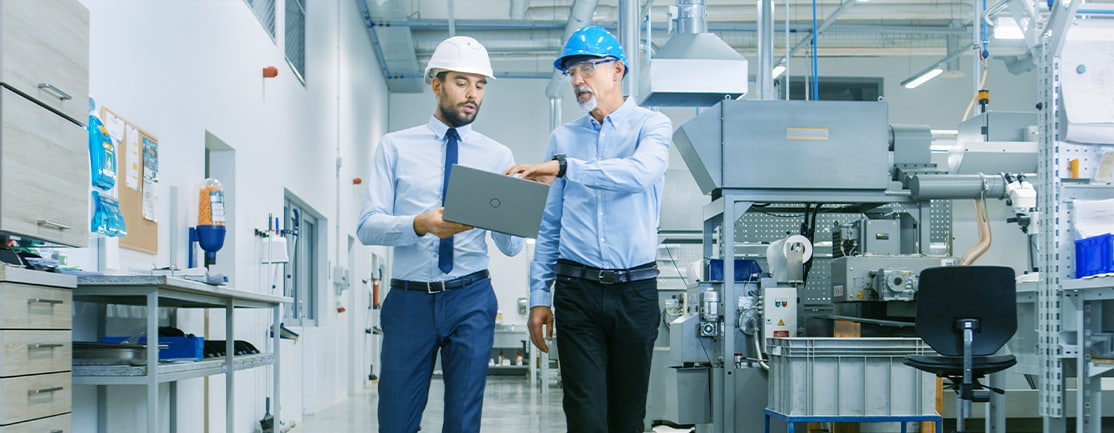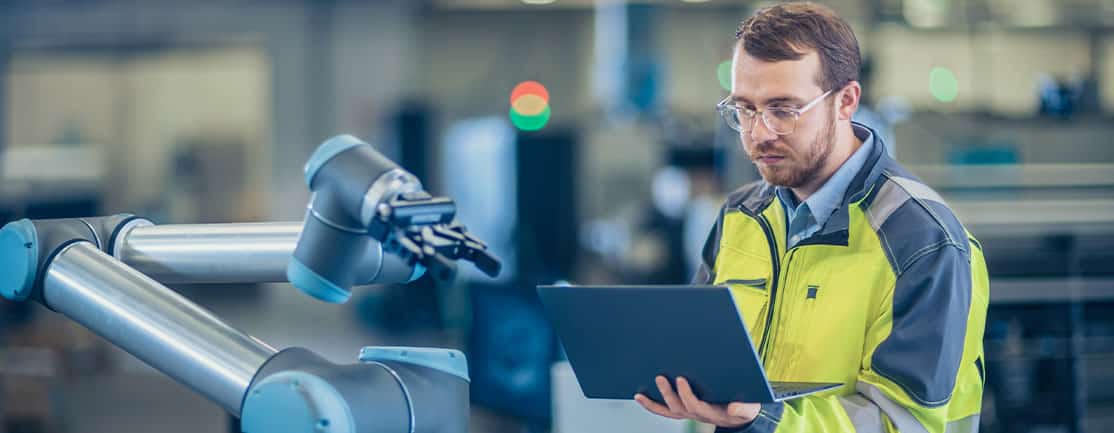
How a continuous improvement system boosts business performance
Achieving sustainable and measurable improvements requires an integrative continuous improvement system. Here’s what a well-orchestrated continuous improvement system can do for your business.
The impact of the COVID-19 pandemic has permanently changed how the working world functions. As the dust of the pandemic settles, those organizations still standing may have to accept that many of their employees wish to continue working from home and that their customers expect agile online engagement. Many manufacturers have successfully survived the last 18+ months of upheaval and uncertainty, largely thanks to good leadership and rapid digital transformation. However, they now need to shift out of emergency mode and strengthen their practices, people and processes to boost performance for the long term. Appropriate continuous improvement systems and processes provide organizations with the necessary guidance to achieve sustainable, integrated and measurable success.
The philosophy of continuous improvement (CI) is rooted in the famous Toyota Production System (TPS) that emphasizes, among other elements, efficiency and employee engagement. Well-known lean methodologies such as kaizen, 5S and Six Sigma provide the improvement tools to inform a solid CI strategy and have delivered impressive business results across multiple sectors. The digital era certainly supports CI in theory; its advanced tools and technologies are built to improve operational excellence and the end-to-end efficiency of the production process. In practice though, digital transformation without the guidance of an integrative continuous improvement system often creates more problems than it solves. Why? Because a digitally enabled manufacturing environment does not operate like a traditional, siloed and hierarchical entity.
Why it’s important to invest in an integrative continuous improvement system
An integrative and systematic approach to CI will help digitally fluent or pursuant manufacturers move out of survival mode and guide them toward sustainable growth. The latter is crucial; economic uncertainty prevails and organizations need to focus their attentions on building competitive advantages that can withstand future shocks. An integrative approach is key as it aligns with a modern manufacturing environment structure that is transparent, data-driven, holistic and collaborative.
Download the eBook The definitive guide to integrative improvement for more on this holistic and sustainable approach to continuous improvement.

An integrative continuous improvement system has a direct effect on key business functions such as customer relations, operating costs and cashflow to improve end-value. Organizations working within such a system report the benefits of continuous improvement can be most pronounced in the following areas:
| 1. | Sales growth in key customer segments |
| 2. | Customer retention and promoter scores |
| 3. | Customer satisfaction, service levels and responsiveness |
| 4. | Speed to market and delivery |
| 5. | Production quality improvement |
| 6. | Direct operating costs |
| 7. | Direct supply chain costs |
| 8. | Operational and transactional support costs |
| 9. | Capital and asset investment |
| 10. | Working capital |
How does an integrative continuous improvement system work?
Introducing a company culture of continuous improvement is rarely a straightforward endeavor. When compounded with the challenges of digital transformation and a pandemic, implementation becomes even more complex – not to mention urgent. An integrative continuous improvement model coordinates this process, and is uniquely designed to meet each organization’s specific needs. However, there are some guiding principles that inform all applications to ensure success. Here is a general overview of how a systematic approach to CI works.
Functional integration is a key element of any formal continuous improvement system worth its salt. Essentially, continuous improvement is achieved when teams are less functionally specific and more multifunctional. As an organization evolves its design to focus on its products, customers and business processes, it needs to improve its team design too. Multifunctional teams deliver improved results by working together to optimize processes, boost value streams and always deliver superior services and products to customers. A system that guides functional integration ensures that teams are consistently collaborating to improve performance across an interdependent range of requirements such as demand and supply planning, maintenance control, quality control and assurance and HR protocols. What is more, the continuous improvement system instills and orchestrates teamwork with an organization’s chosen lean methodologies to ensure that everyone is operating from the same platform in pursuit of shared objectives.
Another guiding principle of an integrative continuous improvement system is the pursuit of sustainability, specifically through a three-tiered system that focuses on:
- Operating practices and tools
- Support systems
- Mindsets and mental models
As lauded and notable as lean methodologies are, Six Sigma, kaizen, or the four-step PDCA cycle, for example, do not achieve improvement through short-term or ad hoc application. Sustainable improvement requires consistent and holistic application that is driven by management’s actions and leadership’s behaviors. An integrated continuous improvement model can guide the incremental improvement efforts of lean methodologies toward structural, process and behavioral alignment.
The overarching objective of a well-managed and well-implemented process improvement system is to guide a business’ evolution successfully. It does this by embedding continuous improvement into the very DNA of the organization through functional integration and sustainable improvement.
The impact of continuous improvement systems on supply chains
A manufacturer’s supply chain stands the most to gain from continuous improvement and yet it is often the supply chain functions that battle to achieve alignment, and thus are unable to improve their performance results. When, despite massive investments and hard work, expectations are not met, inter-functional conflicts and ‘‘blame games’’ typically arise which further undermine progress.
The fundamental issue is not the people behind the functions per se; most teams are perfectly capable, competent and willing to improve. The reality is that traditional supply chain functions operate in silos. In other words, there is no functional integration encouraging teams to pay attention to how all their actions impact the supply chain as a whole. In fact, there are many instances of how the oblivious actions of one function upset another function’s performance, leading to increased conflict, employee disengagement and suboptimal supply chain performance.
An integrative continuous improvement system looks at an organization’s supply chain as a whole and maps its strengths and weaknesses. It then guides cross-functional alignment to enhance the supply chain’s performance through collaboration. By working together toward shared supply chain objectives, functions immediately add more value and deliver better results. From a continuous improvement perspective, an integrated and sustainable supply chain sits within an organization and forms part of the business’ value chain, uniting all stakeholders – employees, suppliers and customers – in consistent success.
The importance of shared learning management
Of course, achieving functional integration requires practical as well as theoretical guidance – and that is exactly what a continuous improvement system provides through a shared learning program. Organizational functions need to build their knowledge and skills beyond their specific mandates in order to collaborate effectively. In other words, team members need to build their skills outside of their comfort zones and develop expertise across a wider scope of the business.
While many employees are keen to learn and advance their careers in line with company growth, change is not easy for people to swallow. A continuous improvement system is able to mitigate employee distress by steering a leadership-driven transformation that is inclusive, clearly communicated and rewarding. As a result, manufacturers benefit from improved decision-making and risk management. Thanks to an increased range of integrated skills and expertise, decisions are made faster with more focus and creativity, and in the best interests of business objectives rather than functional KPIs. An integrated team approach to risk delivers more constructive and proactive solutions, improves efficiencies by reducing waste and eliminating duplication, and responds to changing customer needs quickly and effectively.
Integrated, sustainable and measurable
Building a solid competitive advantage in the post-pandemic context requires an organizational shift from survival focused costs savings to future focused operational optimization. By seamlessly merging with an organization’s chosen lean methodologies, a well-orchestrated continuous improvement system integrates people, processes and practices to improve end value.
Sustainable and steady success is the result of a well-guided and carefully implemented evolution that focuses on boosting employee empowerment, customer engagement, operational efficiency, functional integration and digital transformation. Manufacturers that chose to develop a continuous improvement system to guide their workflow will achieve integrated, sustainable and measurable improvements that have a direct and positive impact on their bottom line.
Book a demo to find out more about unlocking sustainable competitive advantage with the TRACC solution.
Frequently Asked Questions
Why should you regularly evaluate continuous improvement systems and processes?
It’s important to constantly re-evaluate your continuous improvement processes and systems because the baseline or metrics you are seeking to improve day-to-day is fluid. The interplay between advancing technologies, evolving processes and dynamic teams needs to be constantly negotiated to ensure optimum business efficiency.
What is a continuous quality improvement (CQI) system?
The continuous quality improvement (CQI) process is designed to provide a total quality management system spanning an organization’s operations, processes and outcomes.

